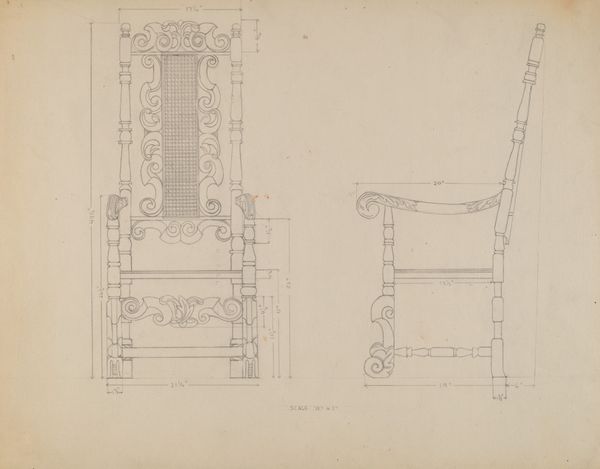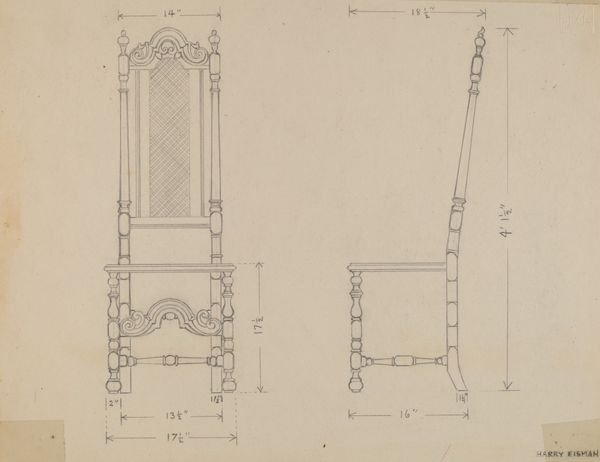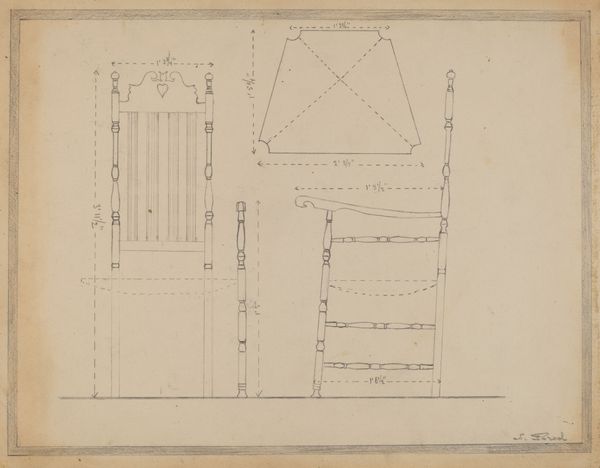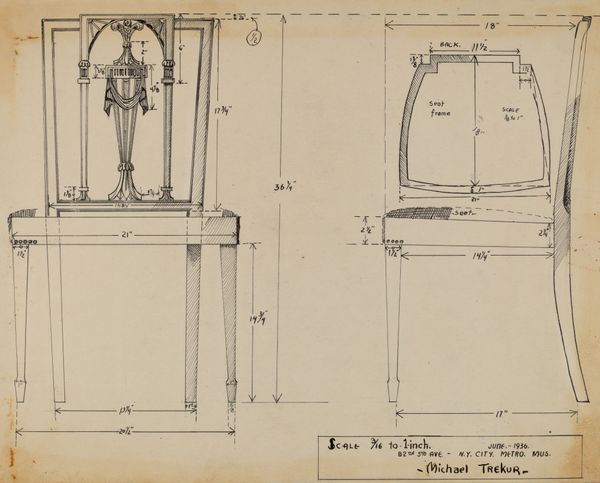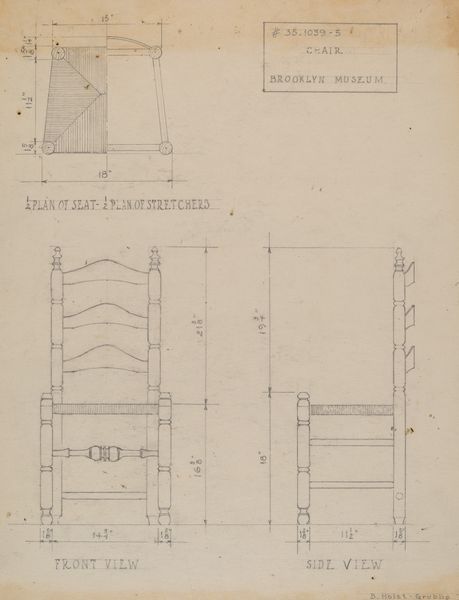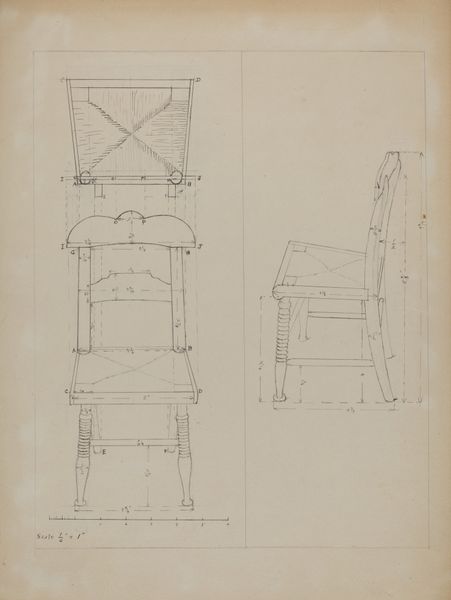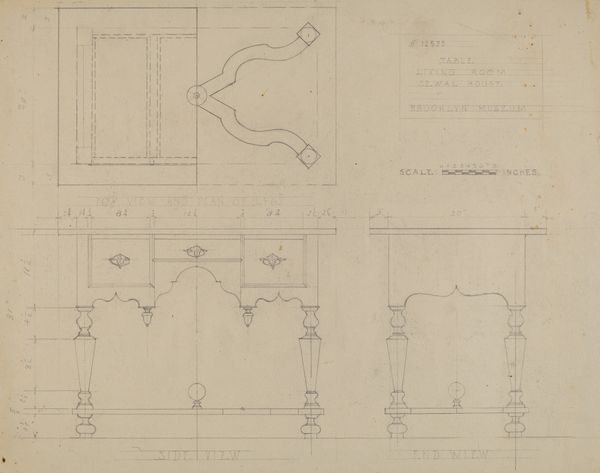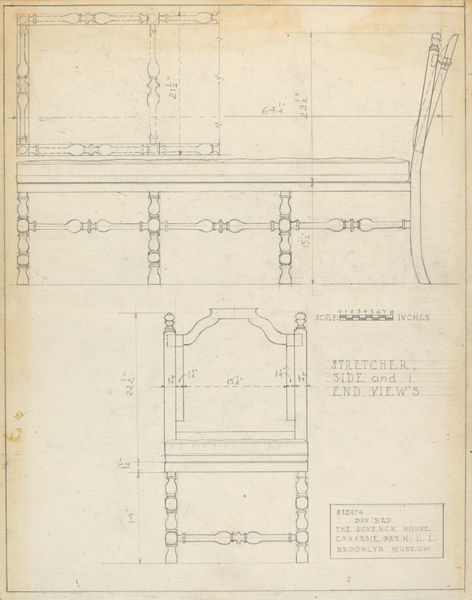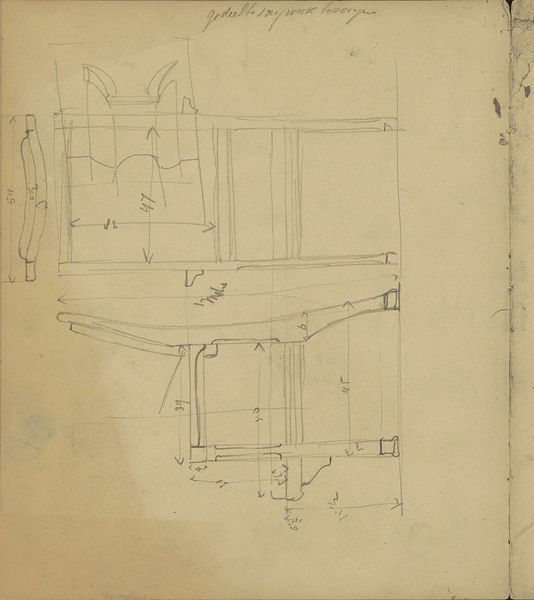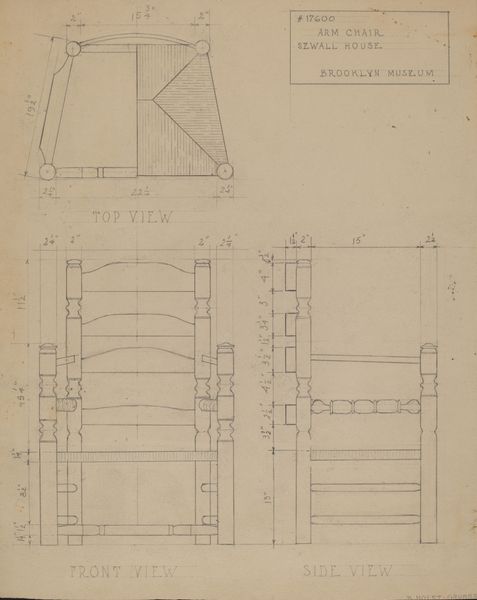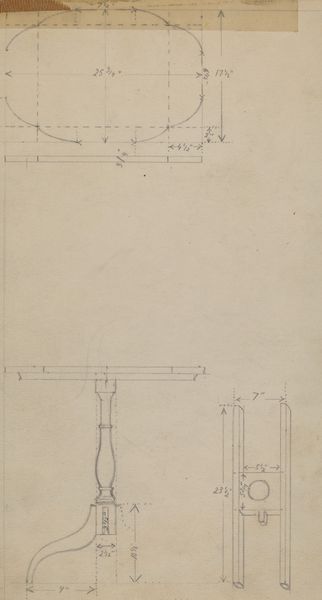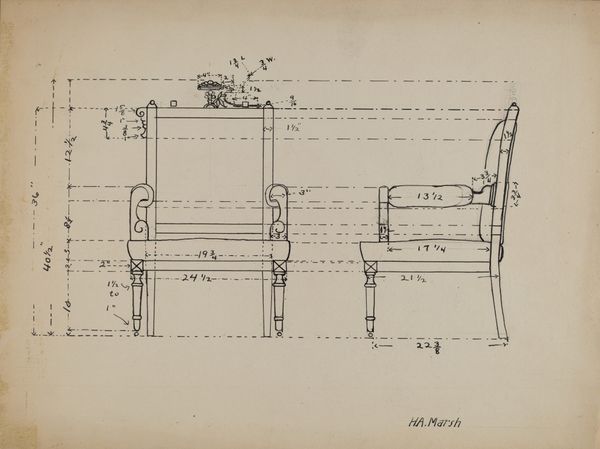
drawing, pencil, architecture
#
drawing
#
etching
#
geometric
#
pencil
#
line
#
architecture
Copyright: National Gallery of Art: CC0 1.0
Curator: This is "Chair," a pencil drawing with etching made sometime between 1935 and 1942 by Bernard Gussow. Editor: It looks so tentative, like a plan barely sketched out. What's striking is the contrast between the detailed, almost baroque upper section and the spare lines defining the structure. It is as if the concept is more important than the actual thing. Curator: Absolutely. And knowing Gussow worked extensively with the Works Progress Administration, specifically the Federal Art Project during the Depression era, it’s tempting to read this not simply as a design but as an index of labor, maybe even social hierarchy. Who sits, who builds, and who dreams up the design? Editor: The repetitive forms, almost like a diagram of turning and joining. The pencil seems to move around, as if exploring the tactility of woodworking and material culture. It seems the object might evoke nostalgia. What kinds of materials were accessible then? Where might this chair find a place? Curator: The period context is crucial here, indeed. The Depression had profound impacts, especially for Jewish immigrants like Gussow. Consider that this chair design embodies an aspiration for upward mobility through meticulous craftmanship, set against the backdrop of widespread unemployment. The ornamentation becomes a signifier of a class aspiration, carefully etched. Editor: Yes, this connects back to material reality of the Depression. A highly ornamented chair like that wasn't affordable for most families, not at all. Perhaps the artist explored a complex vision. Curator: Exactly. The drawing almost anticipates consumption patterns of the rising middle class in post-war America, all embedded within that era’s complicated relationship to labor. It raises questions: who were the intended consumers of this design? Was this design accessible? Editor: Well, considering the means of production implied here… it makes me wonder. A blueprint represents a kind of production possibility, where craft could elevate or perpetuate inequalities. A beautifully poignant perspective! Curator: Agreed. Examining this 'Chair,' we see echoes of economic disparity, aspiration, and craft. The period marked a struggle and this sketch visualizes not just design but access and status. Editor: Ultimately, this exploration reminds us how profoundly objects speak to culture and, perhaps, labor.
Comments
No comments
Be the first to comment and join the conversation on the ultimate creative platform.
